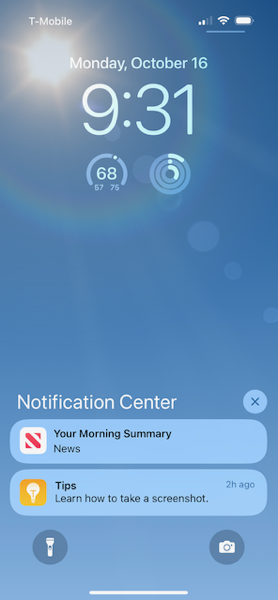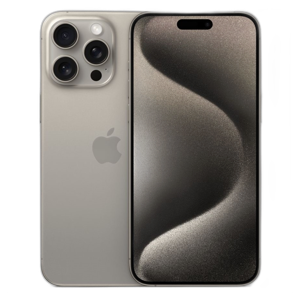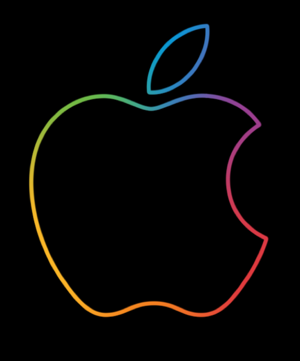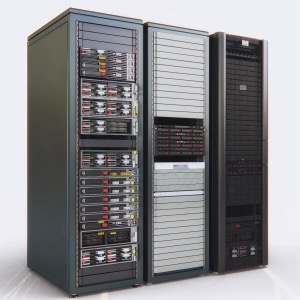I’ve got a bone to pick with companies.
I know, Who doesn’t? And Me having a bone to pick? Say it isn’t so!
It’s not a big bone to pick, it’s more of an annoyance and / or commentary on the modern world.
The bone is this. Every company, Electric, Gas, Insurance, Phone, Cable, Internet, whatever… Wants you to have an email and or internet accessible account with them.
They say it’s for convenience, I ask whose?
It’s not convenient at all when the first thing in the morning after the alarm has awakened me, to have my phone blow up with tons of bullshit from these companies.
I’m still naked and haven’t had my coffee yet! How about delivering your bullshit at Noon or how about late afternoon?
A classic example was my insurance company this morning. God help you if the company you deal with also has an app for that!
Because their app is on my phone it can send me a notification. In the past, this has been useful if I had a claim being worked. But I don’t have any claims right now. Getting a notification seemed odd so I thought, “I’d better see what that’s about.”
I tap on the notification and instead of seeing what the issue is, I’m told that the wrong password has been entered, and I have 3 tries left. “Hmm, is someone trying to hack my insurance policy?”
Standing naked in my kitchen not fully awake, waiting for the coffee to finish gurgling I’m suddenly thrust into a technological puzzle. “Why can’t I log into their app?”
I’d have preferred to ease into my day, you know, have a cup of coffee pull some clothes on and then move on from there.
This notification could have waited for delivery until 9 am local time, when my Agent opens so that if there is a problem we can handle it as humans instead of a computer dictating what a human needs to do.
The coffee finishes and after a couple of swallows, I go to my computer. (Hey there little hacker assholes… You missed your chance to get an eyeful of my one-eyed-monster, since your email claims to control my camera. FYI I’ve already sent naked phots to everyone in my contact list!)
Anyhow, I try to log onto the insurance site via the web. Again I get the wrong password bullshit! I check the password manager and find the problem.
The insurance company made me create a “New Login” for the last claim so now there are two different logins and the computer is grabbing the latest one. That’s logical… the most recent one is likely to be the correct one.
Except when dealing with Banks, and Insurance companies who are interested in providing for my safety and convenience.
I force the computer to use the older login and successfully gain access to their site. Now I have to find out what triggered the notice.
After screwing around for another few minutes I find the trigger.
“Please review your contact information so that we may contact you. Consider going paperless, have your billing delivered right to your inbox. It’s fast, eco-friendly, and convenient.“
UH NOPE!
In fact since January I’ve switched everything back to paper. I’d recommend that everyone else do the same. Here’s why.
If you’re single, paperless billing is fine. If you’re married, then you’re screwed if you’re not the person whose email is being used to receive the paperless billing. This is doubly true if you don’t happen to have access to the email of your deceased spouse.
If you’re dealing with your spouse having died, the last thing you want, or need to deal with is not knowing when the electricity is going to be turned off due to non payment. When you’re dealing with grief you tend to only see what is right in front of you. Everything else is just bullshit noise.
Generally speaking, we all receive paper mail so in this event, the bill is right in front of you.
I can hear the Green new deal assholes saying, “ But what about the environment?”
You know what? All these companies could save the environment and still send paper mail if they did one simple thing.
Stop sending 5, 10, or 20 pages of crap no-one reads!
Really, the bill is essentially 1 page front and back… But there are always 5 or more additional pages of disclosures, multiple language options, PUC notifications and endless justifications about the reason the bill is higher this month than last month and why the bill has risen 50% in the last year.
All of this shit goes right in the trash if it’s paper, and if it’s an e-bill it’s never read. Maybe these companies should start by firing the shithead parasitic attorneys who write this shit to protect the company! That might make our lives simpler. Oh wait… unemployed attorneys? Fuck! They’ll go into politics, and then we’ll be really screwed!
People would likely be way less litigious if there were fewer attorneys. With one exception in my life. Every fucking attorney has been a waste of time and money.
Here’s another reason to force these companies to mail your bill. If your email is hacked and your bills come via email, the hacker has access to a lot of personal data. Why bother shredding everything if you’re email is unencrypted and insecure?
Some of you are thinking, well use e-bills on your utilities. Yep, that works except or until your spouse dies then you have zero control and the utilities are not particularly helpful in getting control back to you. Of course most of their call center people are overseas anyway and so they have zero clue what you as the consumer are seeing and typically have no real method to resolve your issue.
 But it’s worse, because it’s super easy to get locked out of your online account with the vendor. Chase Bank and I HATE each other because they’re always fiddling with the passwords and sign in without telling me. Then I find out when I’m needing to do something and am locked out of the account. Honestly I just call them from the get go now, because I know the account and password will be locked out or otherwise fucked up.
But it’s worse, because it’s super easy to get locked out of your online account with the vendor. Chase Bank and I HATE each other because they’re always fiddling with the passwords and sign in without telling me. Then I find out when I’m needing to do something and am locked out of the account. Honestly I just call them from the get go now, because I know the account and password will be locked out or otherwise fucked up.
T-Mobile is getting more and more difficult to deal with, even on the damn phone… now they want a pin to talk to you. “yet another fucking number or password to remember,” really? Like I’m going to make my life more complicated because you people can’t seem to keep customer data safe.
T-Mobile is like the preachers daughter that is always pregnant. “Honey, you can pray in front of those boys all you want, just keep your legs together!”
I’ve thought for a while it’s because I’m getting crotchety in my old age. There may be a fair amount of that, but a lot of this is about the realization that we all spend a lot of time navigating through phone trees, poorly deigned web sites, and talking to automations that completely fail to understand what we are asking for. In pursuit of allowing a corporation to save money. But in the process we’ve become employees in a way, instead of customers.
You could argue that us doing the work for the corporation saves us, the consumer, money because it allows these corporations to keep costs down. I’m sorry until I see a real accounting of how much money I’m saving by spending my time to deal with utilities, banks, & insurance companies via their websites and phone trees I don’t think it’s saving us a dime.
In fact, I’d suggest that until I see 5 or 10 % credit on my bill for managing my account, using email delivery of bills, and using e-bill systems that whatever savings the corporation is actually realizing, is probably going into the pockets of the top executives. In that instance, we’re actually paying twice. Once for the damnable service and a second time, in the time we’re giving these corporations to un-fuck the service their foreign employees incorrectly set up in the first place.
Now I’m off to make phone calls.
T-Mobile is apparently getting ready to screw a bunch of customers by forcing them onto different rate plans. Many of their new rate plans are just as incomprehensible as their old rate plans, or more incomprehensible! They also appear to be more expensive. So I’m going to force T-Mobile to walk me through exactly what they are going to do. I’m currently waiting in their call back queue and I’m not in any mood to talk to some pidgin English speaking representative.
Less than a month ago it seems… (maybe a couple of months ago) T-mobile decided that they didn’t want to deal with credit cards being used for autopay anymore. I was making 3% from their monthly billing by using the Apple Card. T-Mobile demanded access to my checking account or my debit card. Oh and If I said “no” and switched to paper billing where I wrote them a check monthly I’d loose my discount on the service.
I think I’ve had T-Mobile for 15 years… Always paid the bill on time, and we always had 3 or 4 lines. If this is how they treat legacy customers perhaps it’s time to switch carriers.
Who knows? Maybe I’ll have a new phone carrier by days end!
I wonder, do I go with Consumer Cellular or Patriot Mobile? I guess I need to check their rate plans!
Have a great day!
 I bought an iPhone 15 Pro to replace my iPhone 12 Pro. I traded in my iPhone 12 Pro so the price of the new phone wasn’t as insane as it could have been.
I bought an iPhone 15 Pro to replace my iPhone 12 Pro. I traded in my iPhone 12 Pro so the price of the new phone wasn’t as insane as it could have been.  I don’t have that many apps on my phone. Part of that is about security and part of it is about not really seeing anything that I would call mind bogglingly useful given the way I live.
I don’t have that many apps on my phone. Part of that is about security and part of it is about not really seeing anything that I would call mind bogglingly useful given the way I live.
 Other times they don’t!
Other times they don’t! A simple example would be the AI deciding to present information on a display that was dark gray on a black screen for the sake of saving energy. Think of an OLED screen where you might only need to turn on the elements in use instead of firing up every element in the display. Keeping the used elements very dim would really be saving energy.
A simple example would be the AI deciding to present information on a display that was dark gray on a black screen for the sake of saving energy. Think of an OLED screen where you might only need to turn on the elements in use instead of firing up every element in the display. Keeping the used elements very dim would really be saving energy. Automated testing is great, but eliminates the human element. That means, that human things like information on a display can be overlooked in testing, and yet the automated tests passed with flying colors.
Automated testing is great, but eliminates the human element. That means, that human things like information on a display can be overlooked in testing, and yet the automated tests passed with flying colors. Hmm another defect just popped out at me.
Hmm another defect just popped out at me. It may sound like I”m bashing on Apple. I’m not intentionally.
It may sound like I”m bashing on Apple. I’m not intentionally. But it’s worse, because it’s super easy to get locked out of your online account with the vendor. Chase Bank and I HATE each other because they’re always fiddling with the passwords and sign in without telling me. Then I find out when I’m needing to do something and am locked out of the account. Honestly I just call them from the get go now, because I know the account and password will be locked out or otherwise fucked up.
But it’s worse, because it’s super easy to get locked out of your online account with the vendor. Chase Bank and I HATE each other because they’re always fiddling with the passwords and sign in without telling me. Then I find out when I’m needing to do something and am locked out of the account. Honestly I just call them from the get go now, because I know the account and password will be locked out or otherwise fucked up.